Foz do Iguacu is an important Brazilian town within the state of Parana, set close to the three-way border between Brazil, Argentina and Paraguay. Explore the incredible natural wonders of the UNESCO-listed Iguazu National Park, which offers the chance to see not only the enormous cascading waterfalls (one of the largest in the world) but also numerous rare and endangered plants and animals. At the Bird Park, see bright and beautiful winged species. Marvel at the architecture, atmosphere and sacred ceremonies at the Buddhist Temple and Omar Ibn Al-Khattab Mosque. Delve into local heritage by attending the mesmerising Ipora Show, a celebration of culture through story, song and dance. Other highlights include the Three Borders Landmark, Itaipu Dam, and Dreamland Wax Museum.



Situated in the Misiones Province of Argentina, in the beautiful Iguazu Department, the Iguaza National Park is a phenomenal wonderland of natural beauty and ecological importance. At the centre of the Paranaense Rainforest, the majestic Iguazu Falls tumble in a display of 275 cascades, and constitute one of the largest waterfalls in the world, earning it a classification as one of the ‘New Seven Wonders of Nature’. The entire park has been recognised as a UNESCO site, due to the falls as well as its abundance of important (and often endangered) flora and fauna. Look out for colourful butterflies, numerous wild cat species, and rare, threatened animals such as the jaguar, yacare caiman, and tapir. Thrill-seekers can take part in white river rafting, while those seeking more leisurely pursuits can take in the views from the park’s excellent restaurant.



Situated in central-west Brazil and sharing borders with Paraguay and Bolivia, Mato Grosso do Sul is one of the most naturally beautiful states in Brazil. This popular tourist destination attracts visitors from around the world with its spectacular beaches and impressive reefs, as well as its incredible network of lagoons and lakes, inhabited by an abundance of plant and animal life. In addition to its natural attractions, visitors to the area can look forward to exploring a diverse variety of interesting cultural sites. These include the Museu das Culturas Dom Bosco in Campo Grande, boasting an excellent collection of over 10 000 species of flora and fauna; the interactive waterfront museum of Muhpan in Corumba, with intriguing displays on human habitation in the region; and Forte de Coimbra, originally built in 1775 to ward off invaders from neighbouring countries.
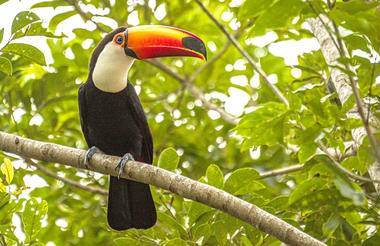
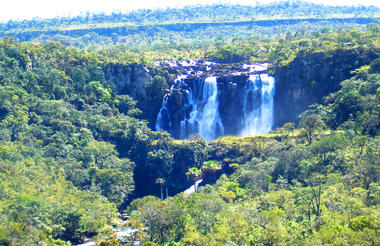
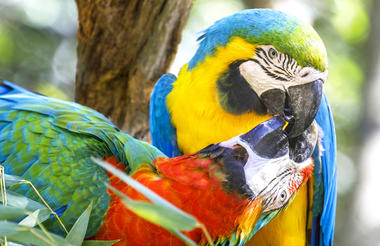
Situated in the southwestern corner of the state of Mato Grosso do Sul, the picturesque playground of Bonito is known as the heart of ecotourism in Brazil. This town is a popular tourist destination as it is encircled by idyllic surrounds featuring cascading waterfalls, lush forests, crystal-clear rivers and otherworldly caves sheltering sparkling lakes and ancient stalactites. Renowned for its incredible natural beauty, this ecological paradise boasts a unique biodiversity. Visitors can look forward to a wide variety of exciting activities including: exploring the underwater wonderland on one of many snorkelling excursions through crystalline waters, hiking along a network of scenic trails, and spelunking through some of the most breathtakingly beautiful caverns in the world.



Located in the Brazilian state of Mato Grosso do Sul, Southern Pantanal boasts a landscape scattered with bustling cities, picturesque cattle ranches and pristine landscape encompassing the largest tropical wetland area in South America. Visitors to the region can begin the Southern Pantanal experience at Corumba, the largest town in the Pantanal and the region’s historic hub, then drive along the unpaved road of Estrada Parque, a popular wildlife route that is home to capybara, jacare, giant anteaters, anacondas and a variety of birdlife. For a taste of local cowboy culture, visit the cattle ranches of Aquidauana and Miranda to discover the cattle rides, music, and traditional leatherwork of the pantaneiro cowboys, and explore the incredible landscapes while kayaking, canoeing and fishing on the rivers and exploring the Maracajú Plateau and Serra mountain ranges.
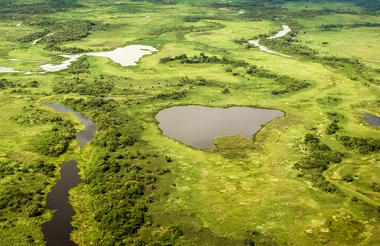
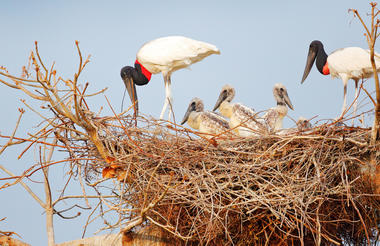
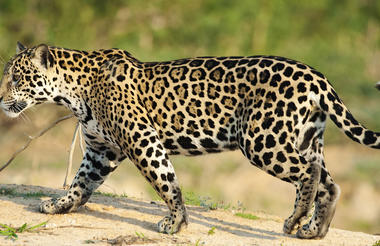
Sao Paulo is Brazil’s largest and most populous urban centre, home to roughly 20 million people in the metropolitan area alone. The capital of Sao Paulo State and the country’s unofficial business capital, the city is also known for its effervescent culture, with myriad entertainment options and a colourful nightlife. Highlight attractions of the city include: the Avenida Paulista, with its commercial epicentre presenting a wide array of shops, restaurants, bookstores and art exhibitions; Bixiga, a ‘little Italy’ known for its theatre scene and vibrant nightlife; the Chinatown district of Liberdade; and Ibirapuera Park, popular for its walking and jogging trails, three museums, free concerts and gorgeous Japanese garden.
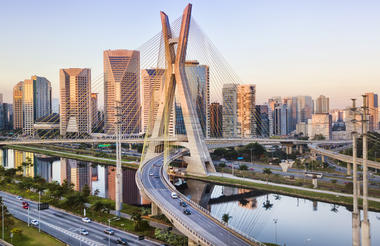
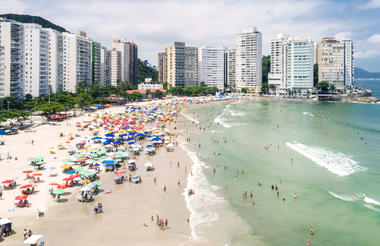
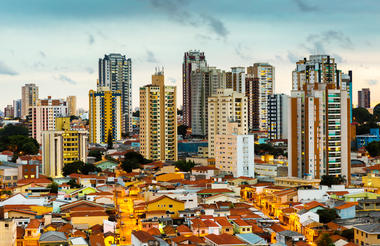
On the Costa Verde, surrounded by quiet beaches and peninsulas, beguiling Paraty is known for its exceptional colonial architecture. The historical district is a joy to explore, with cobblestone streets winding between whitewashed buildings and baroque churches. Cultural offerings are not limited to the historical, however – Paraty is home to many creative souls and entrepreneurs from around the world, whose restaurants, galleries, and shops give the town a cosmopolitan feel. Nature lovers will enjoy the nearby reserves, parks, and mountains that surround this enticing destination.



Vila do Abraao is a small, picturesque village in a bay on the northeastern coast of Brazil’s Ilha Grande Island. As the main town on the island, it provides the necessary shops and services among the otherwise quite stunningly untamed wilderness. The town’s palm-fringed, golden-sanded beach, and its surrounding 150 kilometres of trails through virgin Atlantic rainforest make it appeal to adventure-seekers. Hikers will see brightly coloured birds, howler monkeys, and stunning vegetation. From a historical perspective, Vila do Abraao has functioned as a pirate’s lair, leper colony and prison - all of which have now fallen away, leaving traces here and there. Meander the cobbled streets at night for a relaxed atmosphere, live music, and several buffet-style restaurants.



A dynamic coastal neighbourhood synonymous with leisure, luxury and nightlife, Copacabana is characterised by million-dollar penthouses, stunning neoclassical buildings and tiny apartments set against a magnificent backdrop of jungle-clad mountains in Rio de Janeiro. From its humble origins as a small fishing village, the "Princess of the Sea" is now a leisure seeker's paradise, bursting with restaurants, nightclubs, bars and hotels, and emits a lively, effervescent energy, perfect for the social traveller. To learn its history, visit Forte de Copacabana, a fort and museum that traces the early days of the Portuguese colony through to the mid-19th century. Art enthusiasts will appreciate a visit to The Eva Klabin Foundation (Casa Museu Eva Klabin), a historical home of famous art and antique collector Eva Klabin that houses over 1000 art pieces from all over the world. A visit to Copacabana is incomplete without the world-famous Copacabana Beach, a 4-kilometre stretch of golden sand dotted with brightly-coloured umbrellas, bars and a popular playground for watersports, football, volleyball, or simply lazing in the sun.
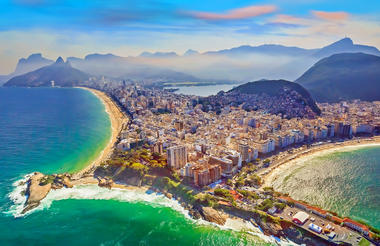
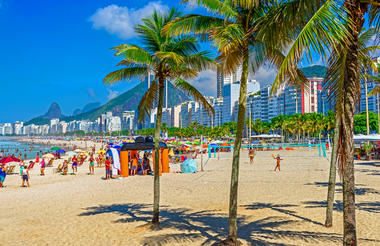
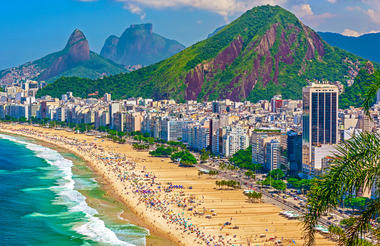
Brazil’s second-largest city and one of the world’s most popular tourism destinations, Rio de Janeiro is renowned for its beautiful beaches, vibrant culture, the iconic Sugar Loaf Mountain and the massive, majestic statue of Christ atop the Corcavado peak. The highlight of Rio’s social calendar is Carnaval, in the weeks leading up to Lent, when the city becomes a riot of colour, music and festivities, with thousands of costumed revellers parading through the street in what the locals call the ‘Greatest Show on Earth’.







